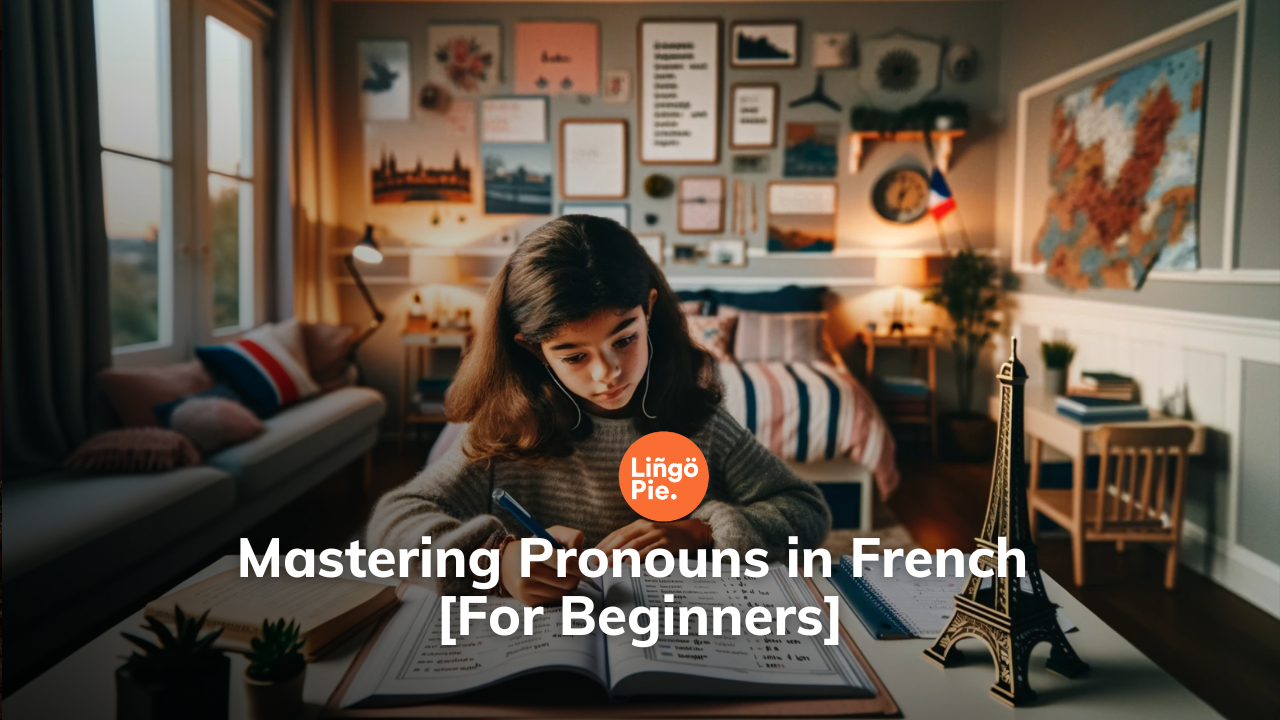When you start learning french, there are some phrases that you already seem to know. You may have heard them in films, overheard two people in a conversation, or when trying to communicate with locals on one of your trips. "C’est bon" is one of them. Pronounce it correctly and it will take you to Rémy's Parisian restaurant in Ratatouille.
"C’est bon" is one of the versatile phrases in French that, when used correctly, makes you look like a proficient speaker. In this post, we have gathered the most basic uses of "c’est bon" so you can use it in a wide range of contexts with confidence.
From ordering food in a restaurant and basic conversations at the table to making plans and talking about tasks, we’ve got you covered. Discover how to use this simple yet profoundly French expression!

What does c’est bon mean?
When I first landed in Paris, I could hear Parisians say c’est bon all time. But what does it really mean? May I use it after tasting some delicious food or when I’m angry? The truth is, both. C’est bon is one of those expressions that can be used in various contexts.
Let’s take a closer look at the different uses of c’est bon:
1.C’est bon as in It’s/That’s good
When I started learning French I used to find it cute when I used to hear someone exclaim “Mmmm, c’est bon !” when tasting food. But, literally, c’est bon means “it’s good” in English and in this context you can use it when talking about various topics, such as food or plans. Let’s take a close look:
C’est bon for food
This use of c'est bon is common when you're talking about the quality or taste of food. It's often used in response to questions about how something is or how it turned out.
Example: “C’est bon, ce chocolat !”
(This chocolate is very good!)
"Comment trouvez-vous le plat ?" "C'est bon!"
(How do you find the dish? It's good!)
C’est bon for plans
Here, c'est bon functions similarly to "okay" or "fine" in English. It’s used to agree with a plan or a suggestion.
Example: "On se retrouve à 15h devant le cinéma ?" "C'est bon."
(Shall we meet at 3 PM in front of the cinema? Okay.)
“Vendredi soir à 19h, c’est bon pour toi ?”
(Does Friday evening at 7 o’clock work for you?)
2. C’est bon as in That’s right/ correct
When I was tutoring French children in Paris, I would help them with their homework. The first time I heard “Mademoiselle, c’est bon ?” I was puzzled, there wasn’t anything around to eat!
C'est bon can be used to mean "that's correct" or to confirm that something is accurate or right.
Example: "La capitale de la France, c'est Paris?" "Oui, c'est bon."
(The capital of France is Paris? Yes, that's correct.)
"Votre réservation est pour le 12 juin, c'est bon?" "Oui, c'est bon."
(Your reservation is for June 12th, correct? Yes, that's correct.)
Read Also:

3. C’est bon as in That’s enough/It’s done
When something is ready, complete, or prepared, c'est bon is used to indicate that state of readiness. When I was working in an office I would hear my French colleagues let go of their pens at 5pm and say “C’est bon !” So c’est bon also means “It’s done” as in finished.
Example: "Le dîner est prêt?" "Oui, c'est bon."
(Is dinner ready? Yes, it is.)
"Tu as fini le rapport?" "Oui, c'est bon."
(Have you finished the report? Yes, it's done.)
It can also be used to indicate exasperation or frustration, and it’s very similar to the expression “ça suffit” (that’s enough).
Example: “Oh là là, c’est bon les filles, arrêtez !
(Come on, girls, that’s enough, stop!)
In a less annoying environment c’est bon can also indicate when something is enough or sufficient, often used to decline additional offers.
Example: "Je te sers encore des pommes de terre?" "Non, c'est bon."
(Should I serve you more potatoes? No, that's enough.
What’s the negative form of c’est bon?
You may have already guessed that the negative form of "c'est bon" in French is "ce n'est pas bon." This construction can be used in various contexts to express that something is not good, not satisfactory, or not sufficient. You probably won’t hear as a standalone expression, though. It’s usually used as part of a longer sentence.
Example: “Ce n’est pas bon, ce gâteau.”
(This cake is not good)
Bear in mind that in informal contexts you may hear French people say: “C’est pas bon.”
Other expressions with c’est bon
Some phrases incorporate "c'est bon" in a slightly different way. And that’s when your French mastery comes in. Using these phrases means that you are able to distinguish the nuances of the language.
This may appear to add complexity, but it's not as hard as it seems. Let's closely examine some of them:
1. Qu'est-ce que c'est bon !
As in How good it is! This expression is used to express strong pleasure or enjoyment, typically about food or drink, but it can also be used more broadly for any enjoyable experience.
Example: "Qu'est-ce que c'est bon, ce dessert !" (How good this dessert is!)
2. C'est trop bon
It literally means It's so good and it’s very common in informal context. It is sed to emphasize that something is very good
Example: "Cette pizza est trop bonne." (This pizza is so good.)
3. C'est bon de + infinitive
We use it as in It's good to [do something]. This structure is used to express the benefit or satisfaction of doing a particular activity.
Example: "C'est bon de se reposer après une longue journée." (It's good to rest after a long day.)
4. C'est bon que
Similar to c’est bon de, c’est bon que translates as It's good that. We use it to express that it is good or beneficial that something happens or is the case. This phrase is often followed by a clause starting with "que" (that).
Example: "C'est bon que tu sois venu." (It's good that you came.)
5. C'est le bon / la bonne
This means It's the right one. It is used to confirm that something is the correct or appropriate choice. "Le bon" is used with masculine nouns and "la bonne" with feminine nouns.
Example: Masculine: "C'est le bon chemin." (It's the right path.)
Feminine: "C'est la bonne réponse." (It's the right answer.)
C’est bon vs. c’est bien
C’est bon is often confused with its cousin, c’est bien. They are both commonly used in French, but they have different meanings and are used in different contexts. Here’s a detailed explanation of the differences between the two:
- C'est bon is more concrete and specific, often related to physical sensations (taste) or the completion of tasks. It can also mean something is sufficient.
- C'est bien is more abstract and general, related to the quality or morality of an action, behavior, or situation. It provides positive feedback and approval beyond physical sensations.
Here are some examples to illustrate the differences:
"C’est bon, cette glace" (This ice-cream is good.)
Here, "c’est bon" is referring to a physical sensation, the taste.
"C'est bien de manger des légumes." (It's good to eat vegetables.)
Here, "c'est bien" evaluates the action of eating vegetables.
"Tu as réparé la voiture? C'est bon." (You fixed the car? It's good.)
Indicates the task is done satisfactorily.
"Tu as fini tes devoirs? C'est bien." (You finished your homework? That's good.)
Praises the completion of the task.
Final words
Aaaaaand... C’est bon! (It’s finished!). In this guide, we've explored the versatile uses of "c'est bon" in French. It serves as a versatile expression utilized extensively across French-speaking regions. Whether savouring delectable cuisine or affirming accuracy and being ready for action, integrating "c'est bon" enriches everyday interactions with authentic French flair.
Learn French through TV Shows with Lingopie!
Make Lingopie a cornerstone of your daily French language learning routine. Dive into authentic French content, including movies, TV series, and documentaries. Lingopie offers interactive subtitles, allowing you to understand the dialogue while also expanding your vocabulary and mastering new phrases.
Immerse yourself in French films and series and participate in Lingopie's Live Group Lessons for a comprehensive language journey. These live lessons provide a unique opportunity to improve your speaking skills. Engage with other students and expert teachers to build confidence in conversation through lively discussions and guided exercises, refining your pronunciation, fluency, and overall communication abilities.







![Happy New Year In French: 10+ Best French Greetings [Guide]](/blog/content/images/size/w300/2024/12/Happy-New-Year-In-French.jpg)
